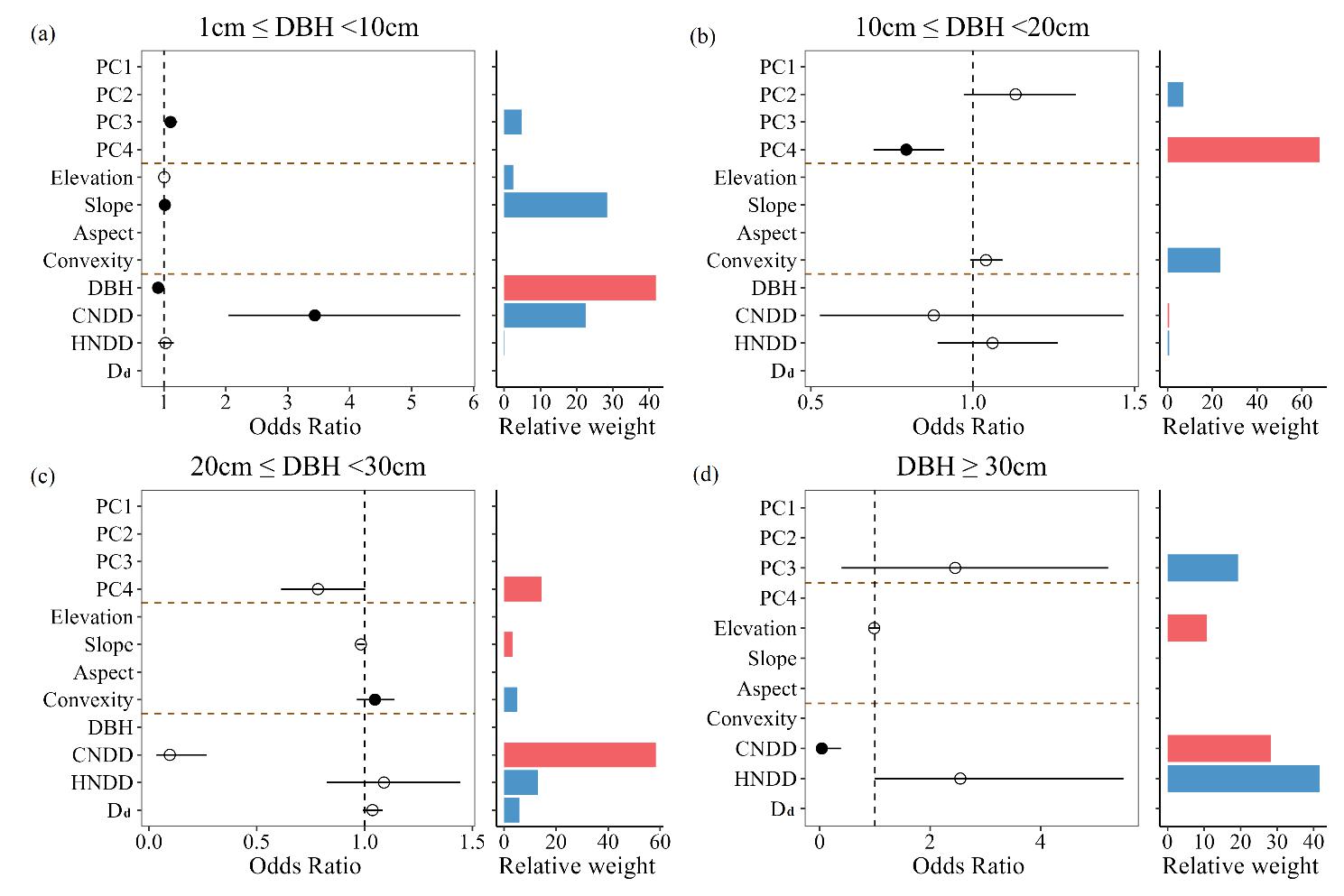Name:DANG Haishan
Tell:
Email:dangkey@wbgcas.cn
Organization:Wuhan Botanical Garden
Secrets of Tree Mortality Get Revealed in Temperate Forests
2024-07-18
Tree mortality plays a crucial role in shaping the structure and function of forests, yet the complexities of this process remain poorly understood.
Researchers from Wuhan Botanical Garden identified distinct patterns of tree mortality in a temperate forest, revealing intriguing differences between various tree species and sizes. Relevant results have been published in Forest Ecosystems entitled “Disparities in tree mortality among plant functional types (PFTs) in a temperate forest: insights into size-dependent and PFT-specific patterns”.
The study, which analyzed data from 46 tree species and over 32,000 individual trees, found that mortality rates varied significantly depending on the type of tree and its size. Evergreen conifer species, for example, exhibited a stable mortality pattern, while deciduous broadleaf and shade-tolerant species showed a declining pattern as they grew.
Digging deeper, the researchers discovered that the factors driving tree mortality also shifted as trees grew. For evergreen conifers, abiotic factors such as environmental conditions dominated mortality in smaller trees, while biotic factors like competition from neighbors became more important in larger trees. In contrast, deciduous broadleaf species were primarily influenced by biotic factors, such as their initial size and competition from other trees of the same species.
Shade-tolerant species, which were adapted to living in low-light conditions, showed a more complex pattern. Mortality in small trees was driven by factors like initial size and competition, while larger trees were affected by a combination of biotic and abiotic factors, including competition from neighbors and environmental conditions. Shade-intolerant species, which required more light to thrive, were primarily affected by competition from neighbors throughout their growth stages.
These findings have important implications for our understanding of forest dynamics and diversity. By recognizing the size-dependent and species-specific patterns of tree mortality, forest managers can develop more effective strategies for maintaining forest resilience and promoting biodiversity.
Dr. HU Man is the first author, Prof. DANG Haishan is the corresponding author. This research was funded by the China Postdoctoral Science Foundation and the National Natural Science Foundation of China.

Effects of potential variables on tree mortality across size classes (a-d). In each panel (a-d), left side shows the odds ratios (OR) of the best fitted tree mortality model across DBH size classes and the right bar chart shows the relative rescaled weights (scaled as a percentage of predictable variance) for the potential predictors in the model (expressed in %). Blue and red bars indicate the positive and negative contributions, respectively, indicating the relative positive or negative contribution to tree mortality (Image by WBG)